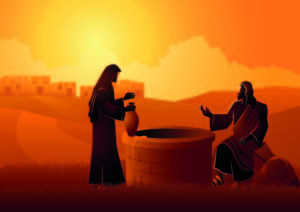Now faith is the assurance of things hoped for, the conviction of things not seen. (Heb. 11:1)
The church season of Advent has four weeks, each one dedicated to an essential characteristic of Christian faith, hope, peace, joy, and love. So for these four weeks leading into Christmas Eve, I’ll be offering some hope, peace, joy, and love in my blog.
Advent is a season of joyous waiting for the birth of our Messiah, Jesus of Nazareth. Advent combines personal reflection and the anticipated celebration of the arrival of salvation. It’s a time of “already and not yet.”
I did not celebrate an Advent season in the faith tradition of my youth. In becoming an Episcopalian, the church seasons offered wonderful opportunities for growth. Each of our seasons, Advent, Christmas, Epiphany, Lent, Holy Week, Eastertide, and Pentecost, hold special meaning because they reorient my approach to hope and faith, peace and joy and love.
These ancient traditions provide time for each Christian to study and pray on the coming of Christ, his incarnation, and our understanding of the light he brings. Then we move to Lent, a time of repentance and returning to Christ, his passion and death, his resurrection, and our infusion with the Holy Spirit, the Advocate, in order to carry on Jesus’ work — ushering in the Reign of God.
It would be impossible to flow through these seasons of the church, these seasons of faith and life, without a sense of hope. Admittedly, faith and hope seem to be the same thing, but I offer a way to distinguish them.
Our personal experiences of the divine provide the foundation of faith — knowing something greater than us all reigns over our existence, something we cannot see, but yet we sense it. We encounter God in some way that confirms for us that God is with us — Emmanuel.
I’ll tell you a story of a “thin place” I experienced as I prepared to enter seminary and begin the ordination process. In order to be ordained in my diocese, we had to attend a nine-month-long exploration of our spiritual journey from birth to the present.
It was a group course, and at the end, the bishop hosted a celebratory Holy Eucharist and reception at the Detroit Episcopal Cathedral Church of St. Paul.
St. Paul’s has special meaning to me as it was our first church home. It is very grand, and the organ can rattle you to your foundation. I was confirmed there in 1988, so it’s been an important part of my life for decades.
During the administration of communion, I served as a chalice bearer, standing to the bishop’s right. After receiving the bread from the bishop, people in the right-side line turned to me to receive the wine.
We had a big crowd that night, and as the line winnowed its way to the front, I looked at the vaulted ceiling, the marvelous stained glass and the enormity of the space. I silently prayed and asked God if this was my call — to be ordained as a priest.
Just before the first communicant got to my station, I was overtaken by a tremor and began shaking. The cup was full. Then my arms began shaking violently, and I was certain I’d spill that consecrated wine all over the place, and next to the bishop, no less! It’s a big no-no to spill or drop the elements. At one point, it felt like the bouncing chalice would jump right out of my hands as I pulled it back towards my body.
I had no idea what was happening, and then I realized the Holy Spirit answered my question, and the shaking stopped immediately. The first person finally arrived none the wiser, and I began to serve the “cup of salvation,” as we say according to our tradition.
I have little memory of the rest of that service and felt quite shaken and drained afterward. After telling one of my group’s spiritual leaders about what happened, she just got a smile, nodded, and hugged me.
Many spiritual experiences have graced me before that and since. St. Teresa of Avila referred to these as spiritual consolations. These encounters with my Creator fuel my faith. They are the rock of my foundation.
From faith experiences, we learn to depend on the God who is out there but not seen. This reliance translates into hope — a hope that this Almighty ultimately reigns and will keep us on a path of love and peace.
I had hope that Joe Biden would win and move us away from the horror that has been the Trump administration. I sense throughout this election cycle that God’s anger had been kindled against the injustice, lying, cheating, sheer greed, and disregard for human life.
In my mind’s eye, my faith allowed me to see the smoke rise from God’s anger. My late mother used to remind me, “Remember that God is in charge.” I’ve been especially aware of her spirit these last few weeks — another sign of faith and hope.
Indeed, we have accomplished job one — to vote Trump out of office so that we can return to a sense of morality and decency. The US was far from perfect before, but surely we can return to a more informed, resolute sanity to fix what needs fixing and improve what works well.
As this week of faith and hope segues to Advent’s week of peace, let us continue to reflect on one of my all-time favorite verses from the Letter to the Hebrews.
Now faith is the assurance of things hoped for, the conviction of things not seen. (Heb. 11:1)
May your Advent journey be filled with faith and hope though they’re not seen.





